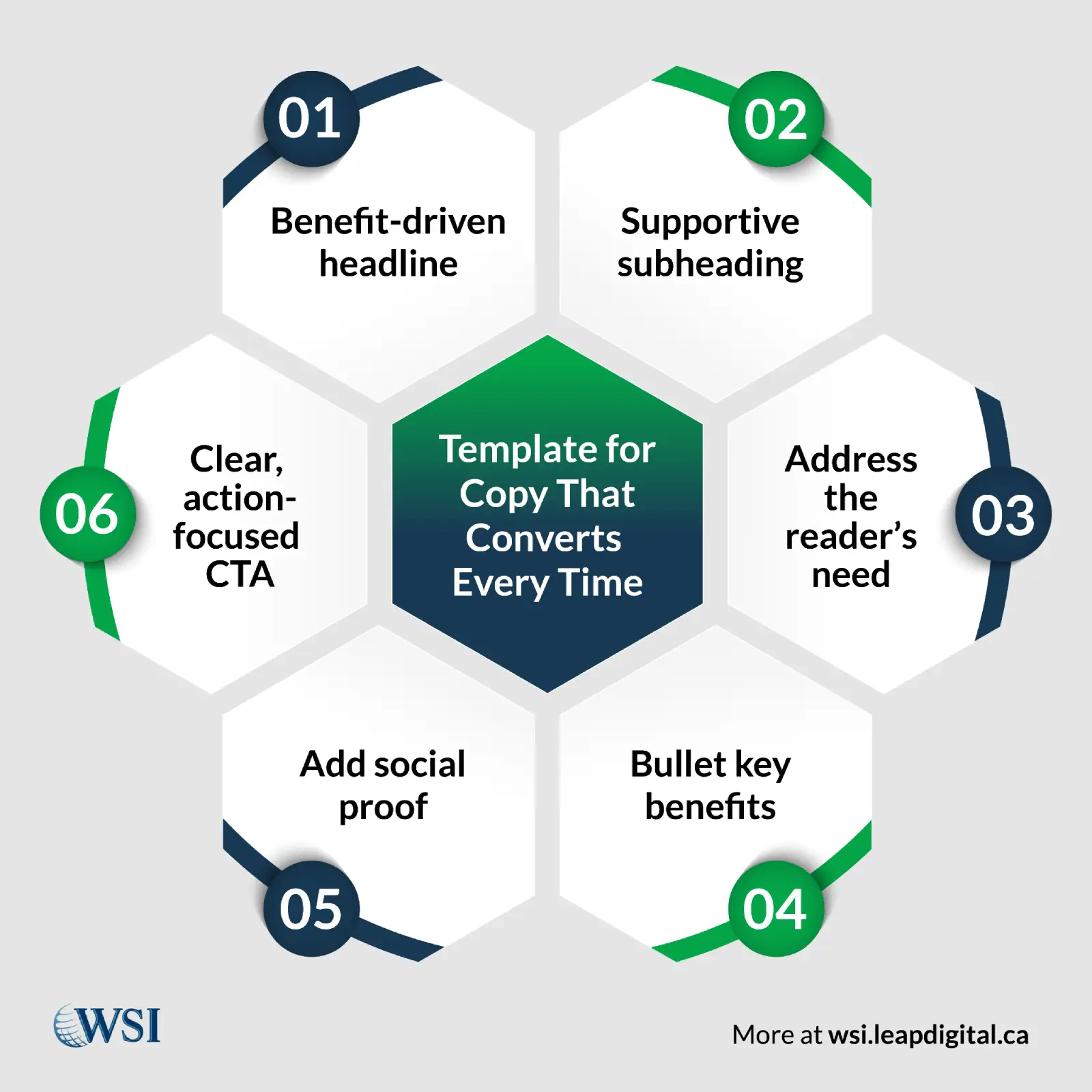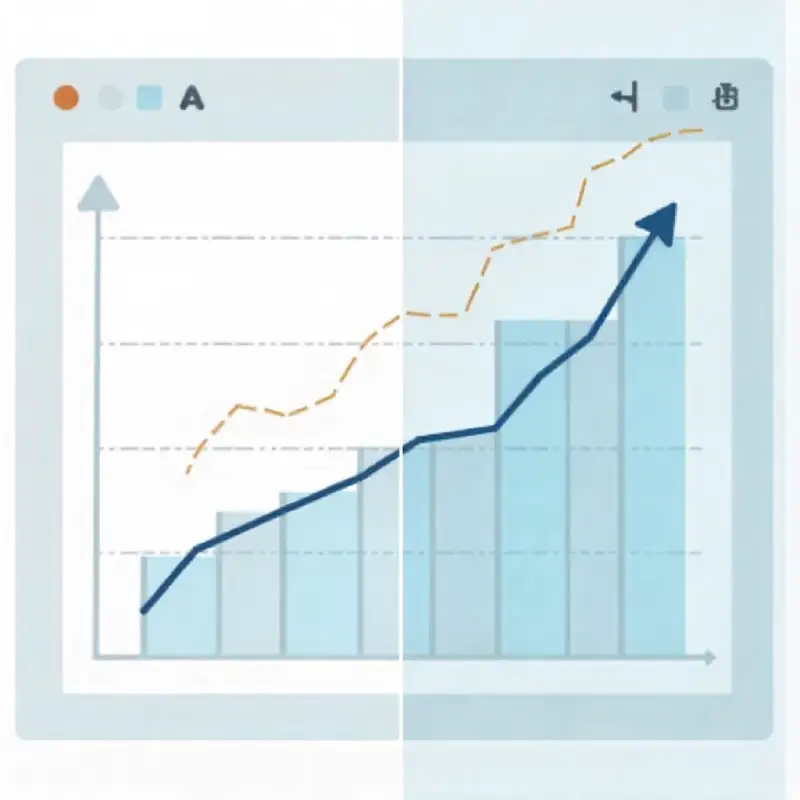In CRO copywriting, the words you choose can decide whether a visitor becomes a customer or clicks away. You’re not writing for a search engine alone; you’re speaking directly to the person who’s weighing a decision. The best-performing copy respects both sides: it engages humans while still signalling relevance to search crawlers.
This balance doesn’t come from guesswork. It comes from a methodical approach to content creation that considers psychology, user behaviour, and data-backed testing. When you focus on this dual purpose, you turn CRO copywriting into a true conversion engine.
Key Takeaways:
- CRO copywriting connects human psychology with SEO principles to drive measurable actions.
- Writing for both readers and crawlers requires a structured approach with consistent testing.
- The right balance increases engagement, conversions, and long-term search visibility.
Contents
- 1 Understanding CRO Copywriting
- 2 The Balance Between Humans and Crawlers in CRO Copywriting
- 3 Writing Copy That Converts
- 4 SEO Best Practices That Support CRO Copywriting
- 5 Ways to Test and Iterate a Copy for Better Conversion
- 5.1 Source Insight Before You Test
- 5.2 Set Clear Goals and Guardrails
- 5.3 Write a Sharp Hypothesis
- 5.4 Prioritise With a Simple Score
- 5.5 Pick the Right Test Type
- 5.6 Plan Sample Size and Duration
- 5.7 Instrument Measurement Properly
- 5.8 Need high-converting copy that works for people and search engines?
- 5.9 QA and Launch Cleanly
- 5.10 Monitor During the Run
- 5.11 Analyse Without Bias
- 5.12 Account for Seasonality and Novelty
- 5.13 Mind SEO While You Experiment
- 5.14 Personalise Responsibly
- 5.15 Roll Out, Document, and Queue the Next Test
- 6 Common Mistakes to Avoid in CRO Copywriting
- 7 Balancing Persuasion and Optimization in CRO Copywriting
Understanding CRO Copywriting
CRO copywriting is the practice of crafting words designed to persuade readers to take a specific action, while maintaining the SEO signals needed for discovery. It’s where persuasion meets technical strategy. The goal isn’t just traffic; it’s traffic that converts.
Key elements include:
- Clear Value Propositions: The reader should understand why they should act within seconds.
- Emotional Triggers: Words that speak to pain points and aspirations encourage decisions.
- SEO Alignment: Keywords like CRO copywriting placed naturally help search engines understand relevance.
- Structured Readability: Formatting, headings, and bullet points keep readers engaged.
- Action-Driven CTAs: Each section should move the reader one step closer to conversion.
The Balance Between Humans and Crawlers in CRO Copywriting
CRO copywriting thrives when you understand the separate needs of your two audiences: people and search crawlers. Readers want clarity, value, and a sense of trust. Crawlers look for keywords, structure, and relevance signals.
Comparison Table:
| Focus | Humans | Crawlers |
| Purpose | Solve a problem or meet a need | Understand and index page content |
| Priority | Clarity, trust, and engagement | Keywords, meta tags, headings |
| Response to content | Emotional and logical decision-making | Algorithmic evaluation |
| Key influence | Storytelling, benefits, proof | Structured markup, internal linking |
Humans read to make decisions. They need to feel that you understand their challenges and can offer a solution that fits. This means using relatable language, presenting clear benefits, and providing proof through examples or testimonials.
Crawlers process your page differently. They scan headings, meta descriptions, keyword placements, and internal links to determine what your page is about. The better you structure your page for them, the more likely it is for relevant searches.
Writing Copy That Converts

CRO copywriting needs to guide the reader toward an action without friction. Every word should earn its place, moving the person from interest to commitment. The goal is to create a natural path that feels easy to follow while still driving measurable results.
- Understand Your Audience: Know their goals, fears, and motivations and personalise your approach for specific segments. A first-time buyer may need reassurance about value and credibility, while a repeat customer may respond better to exclusivity or loyalty perks.
- Use Benefit-First Headlines: Instead of “Learn About Our Services,” write “Get Faster Results With Expert Digital Marketing.” Headlines should instantly communicate the advantage of taking action.
- Structure for Skimmability: Break text into short paragraphs, bullet points, and subheadings so readers can quickly find what matters most.
- Incorporate Social Proof: Testimonials, case studies, trust badges, and statistics reassure visitors that others have succeeded with your offer.
- Create Urgency Without Pressure: Limited-time offers, seasonal promotions, or time-bound bonuses encourage faster decisions while respecting the reader’s comfort level.
- Address Objections Early: Anticipate concerns such as price, quality, or reliability, and answer them directly through content, FAQs, or guarantees.
- Highlight Clear Next Steps: Avoid leaving readers unsure of what to do next. Provide specific instructions that lead directly to the desired action.
- Maintain Consistent Tone and Messaging: Make sure your copy feels cohesive from headline to call-to-action, reinforcing the same promise throughout.
- Use Visual Cues: Pair your words with relevant images, icons, or design elements that direct attention to key points and CTAs.
- Test Multiple Variations: Experiment with different headline styles, CTA phrasing, or benefit orders to discover what resonates best.
SEO Best Practices That Support CRO Copywriting
SEO doesn’t just drive traffic, it shapes how visitors interact with your content. When aligned with CRO copywriting, SEO ensures the right people see the right message.
Use Keywords With Intent
Place your main keyword where it signals relevance without disrupting flow. This includes titles, meta descriptions, and naturally, in body text.
Optimize for Readability
Readable pages keep visitors engaged longer, sending positive engagement signals to search engines. Use plain language and clear formatting.
Strengthen Internal Linking
Linking to related pages (like your business strategy service) helps both crawlers and readers find relevant information quickly.

Ready to refine your messaging for both humans and search engines?
Our strategies keep your copy persuasive and discoverable.
Ways to Test and Iterate a Copy for Better Conversion
Effective CRO copywriting doesn’t end at publish. Instinct can be wrong, and small wording choices can swing revenue, so you need a stable loop: hypothesise, test, learn, and scale. A disciplined process reduces risk, protects brand trust, and channels effort toward changes that move the numbers that matter. With this approach, CRO copywriting stops being a guess and starts behaving like an operating system.
Source Insight Before You Test
Good tests start with evidence, not hunches. Collect inputs from support chats, sales calls, reviews, session replays, and on-page polls to spot objections and confusion. Pair that with analytics to find drop-off points and weak CTAs. Turn each finding into a question your next experiment should answer.
- Inputs to mine: top chat questions, common refund reasons, search terms used on site, rage-click zones, and slow sections.
Set Clear Goals and Guardrails
Define one primary conversion metric for the page and a short list of supporting signals. Choose guardrails that flag harm even when the primary metric looks positive. Tie each metric to a business outcome so decisions stay grounded in impact, not opinion.
- Primary metric examples: form submit rate, demo-booked rate, add-to-cart rate, revenue per visitor.
- Supporting signals: scroll depth, time on key sections, CTA click-through.
- Guardrails: bounce rate, error rate, page speed, refund rate, support tickets.
Write a Sharp Hypothesis
Strong tests start with a cause-and-effect claim. Your hypothesis should name the audience, the copy element you’ll change, and the expected lift. This keeps the team aligned and makes results easier to interpret. Add a time window so you know when to call it.
- Template: “Because [insight], changing [element] from [current] to [variant] for [audience] will increase [metric] by [X%] within [period].”
- Example: “Because many visitors mention uncertainty about pricing on chat, adding a plain-language ‘What you pay’ explainer above the CTA for first-time visitors will increase demo bookings by 12% in two weeks.”
Prioritise With a Simple Score
Not every idea deserves traffic. Score candidates on impact, confidence, and ease so high-value work rises to the top. Keep the scoring lightweight enough to use every week, yet strict enough to cut noise.
- Sample scale: Impact (1–5), Confidence (1–5), Ease (1–5); rank by total.
- Promote tests that reduce friction on critical paths first.
Pick the Right Test Type
Different questions call for different methods. A/B tests compare one variant against a control and fit most CRO copywriting changes. Multivariate tests examine combinations across multiple elements when you have heavy traffic. Bandit tests adapt traffic in real time when you need faster exploitation at the cost of research depth.
- A/B: headlines, CTAs, benefit blocks.
- Split-URL: full section rewrites or layout shifts.
- Multivariate: headline × subhead × CTA text (only with large sample sizes).
- Bandit: short-window promos where speed matters more than research.
Plan Sample Size and Duration
Run long enough to reach trustworthy conclusions. Estimate sample size using baseline conversion rate, minimum detectable effect, 95% confidence, and 80% power. Cover at least one full business cycle so weekday/weekend patterns don’t skew outcomes.
- Use a sample-size calculator and set a realistic effect size (e.g., 5–10%).
- Keep the test live until both the required sample and minimum duration are met.
- Avoid peeking and stopping early; that inflates false positives.
Instrument Measurement Properly
Clean data beats clever ideas. Track consistent events, dedupe conversions, and exclude internal traffic. Pair quantitative data with heatmaps or session replays to explain why one version won.
- Map macro conversions (orders, booked calls) and micro conversions (CTA clicks, FAQs opened).
- QA every event name, value, and trigger; align attribution windows.
- Use UTM tagging on campaigns feeding the test, so the source mix doesn’t confuse results.

Need high-converting copy that works for people and search engines?
Let Leap Digital help you design words that drive measurable results.
QA and Launch Cleanly
Shipping broken variants wastes traffic. Test on major browsers and devices, confirm no layout shift or flicker, and check accessibility so everyone can use the page. Fast pages convert better, so measure performance before launch.
- Preflight checklist: links, forms, pricing, error states, focus order, contrast, alt text, mobile tap targets, speed.
Monitor During the Run
Look for early warning signs without declaring a winner too soon. If guardrails breach, pause and fix. Watch for sample-ratio mismatch (uneven traffic split), tracking gaps, or traffic shocks from campaigns.
- Daily check: allocations, data freshness, guardrails, anomaly notes.
Analyse Without Bias
Wait until the criteria are met, then review uplift with confidence intervals. Compare absolute and relative changes, and scan key segments (device, geo, new vs. returning) to spot hidden wins, while avoiding over-slicing. Consider novelty and learning effects before rolling out.
- Report: baseline, variant performance, lift%, interval, guardrails, screenshots, key learnings, next actions.
Account for Seasonality and Novelty
Short spikes can mislead. Check calendar effects like holidays, product launches, and paid traffic bursts that distort behaviour. For copy with a new message, watch for early curiosity that fades after exposure.
- If seasonality is strong, re-run the winner in a holdout after the peak to confirm persistence.
Mind SEO While You Experiment
Copy tests can touch titles, headings, and internal links. Avoid frequent swings in page titles and keep canonical tags steady. If a test affects structured data or core headings, ship fewer concurrent changes and track search impressions alongside conversions.
- Link to related content, such as your business strategy servic,e when it improves relevance and helps visitors progress.
Personalise Responsibly
Segments often respond to different messages, yet fragmentation can dilute learning. Start with broad tests and only split once you see strong segment effects. When you personalise, document the rules and cap the number of live variants.
- Common splits: device type, traffic source, first-time vs. returning, high-intent pages.
Roll Out, Document, and Queue the Next Test
Adopt a staged rollout if the lift is large or the risk is high. Log each test in a shared register so future work builds on past findings. Feed insights back into your CRO copywriting style guide so wins become the new standard.
- Keep a test log: hypothesis, variants, dates, traffic, metrics, decision, learnings, link to assets.
Common Mistakes to Avoid in CRO Copywriting
Even well-intentioned copy can underperform when it falls into common traps. These issues often creep in during rushed campaigns or when the focus shifts too heavily toward one audience, human or crawler, at the expense of the other. Recognising them early means you can correct course before your conversion rate suffers.
- Overloading With Keywords: Keyword stuffing may seem like a shortcut to SEO visibility, but in CRO copywriting, it often kills engagement. Readers notice unnatural phrasing and disengage, while search engines can penalise for spam-like repetition. Instead, weave keywords in naturally alongside related terms and variations to maintain flow.
- Ignoring User Intent: Copy that doesn’t match why someone clicked through is a fast path to high bounce rates. If visitors come looking for pricing clarity, showing them a generic product pitch first wastes their attention. Always align your headline, lead sentence, and CTA with the promise made in ads, search snippets, or referring links.
- Weak Calls-to-Action: CTAs like “Click Here” or “Learn More” offer no incentive. A strong CTA in CRO copywriting sets an expectation and benefit: “Get Your Free 14-Day Trial” or “Book Your 20-Minute Strategy Call.” The more specific the value, the higher the likelihood of action.
- Walls of Text: Dense, unbroken paragraphs slow reading speed and discourage scanning. Break copy into shorter chunks with descriptive subheadings, bullet points, and pull quotes. This keeps readers engaged and lets them skip to the most relevant parts without friction.
- Inconsistent Messaging: Mismatched tone, style, or value propositions across a single page erodes trust. For example, a headline promising “Enterprise Solutions” paired with body copy about “affordable starter plans” confuses the audience. Keep brand voice and offer positioning consistent from headline to CTA.
- Overcomplicating Language: Industry jargon or overly technical descriptions can alienate visitors, especially in consumer-facing offers. Replace dense terms with plain, accessible language while still showing authority.
- Neglecting Mobile Experience: CRO copywriting that works on desktop can fail on mobile if CTAs sit below long blocks of text or critical points require too much scrolling. Always preview and adjust layout for smaller screens.
- Skipping Proof Elements: Without testimonials, case studies, or data points, even persuasive copy can feel unsubstantiated. Back up claims with tangible proof so readers feel safe moving forward.
- Testing Too Many Changes at Once: In CRO-focused content, changing headlines, CTAs, and offers all at once makes it impossible to know which change helped or hurt performance. Limit variables to isolate what works.
Balancing Persuasion and Optimization in CRO Copywriting
CRO copywriting works when every sentence respects both the human reader and the search crawler. It’s about understanding that the two audiences work together, crawlers bring visitors, and your words turn them into customers. When you apply structured strategies, test relentlessly, and focus on real audience needs, your copy does more than rank; it drives measurable business growth.
By keeping CRO copywriting at the centre of your digital strategy, you’re building a foundation where visibility and conversions grow side by side, ensuring both audiences, human and crawler, are satisfied.

Want a testing roadmap tailored to your CRO copywriting strategy?
Leap Digital can plan hypotheses, calculate sample sizes, set up analytics, and run disciplined A/B tests.

